You've been wrong about Cossacks this whole time

The Kuban' Cossacks, end of the 19th century
SputnikThey lived according to their own laws in the free lands of the Russian South. They were one of the most trusted military forces in the Russian Empire – but at the same time, a constant headache for the Russian tsars who wanted to govern and control them.
The number of Cossacks, statistics about them and their places of residence cannot be exactly defined. Historically, this very word denoted a vast congregation of free people in the Russian lands, people that had been there since ancient times.
How did the Cossacks appear?
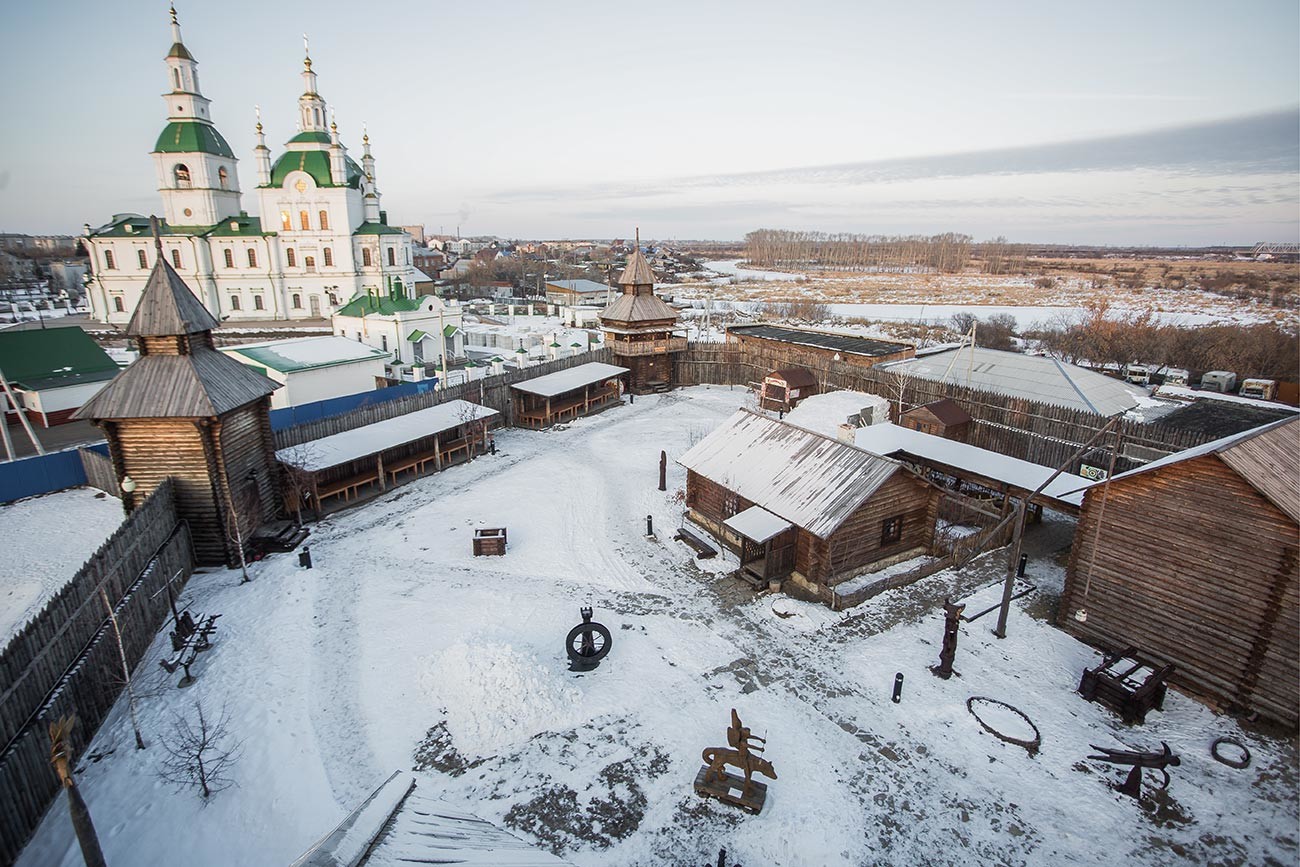
Yalutorovsk ostrog (fortress), Tyumen region, Russia. One of the oldest surviving Siberian Cossack fortresses
Maksim Slutskyi/TASSThe very word Cossack (‘казак’) is Turkic and means a free man, a vagabond, a fortune seeker. Obviously, in Russia it appeared to denote people who weren’t tied down to their masters or landlords.
The first Cossacks were people who were living on the outskirts of the Russian duchies, mainly in the South of the Russian lands – approximately from the 14th-15th centuries. They lived in fortified settlements that were set up to protect the duchies from the nomadic tribes that wandered around in the area called the Wild Fields – between the lands of Vladimir-Suzdal Rus’ and the Caspian and the Black seas.
These communities were filled up with people who chose freedom and danger in favor of the relatively safe and dependent living in Central Russia. As serfdom, taxes, and the centralized government started to appear in Russia, the lands of the Cossacks started to accept runaway serfs, people who had trouble with the law, and whoever else chose to escape there.
When did the Cossacks start to serve the Russian government?
As soon as the first centralized government appeared in the Moscow State (around the 15th century), the first Grand Princes of Moscow tried to put the Cossacks at their service. Cossack military formations took part in the battles of the Moscow princes against the nomadic Tatars. Under Ivan the Terrible, the Cossacks living in the South (along the Don, the Dnieper rivers, and elsewhere) were partly governed by his prikazes (state institutions that preceded ministries). The Cossacks served and stood guard against the enemies of the Moscow State in border cities, partly supported by the Moscow government and commanded by official non-Cossack military men sent from the central region.
In the 17th century, a separate Cossack prikaz was organized to control the Cossacks, but they still largely lived a free way of life – attacking Russia’s neighbors (the Ottoman Empire in particular), disturbing them with their raids even when the government tried to uphold peace between the countries.
There were over 20 different Cossack hosts (Cossack armies) located in various parts of the Russian Empire. Up until the end of the 19th century, they kept their relatively free status. The Don Cossack host (located around the Don river basin, the territory of contemporary Ukraine) was the largest and the oldest one of them. What distinguished them from the regular army was that in peaceful periods, the Cossack hosts easily disbanded – and the individual Cossacks returned to their free way of life – trading goods and commodities, drinking, partying, and just living their free life on the steppes. They were free from capital tax, from recruitment, and other taxes, but were strictly obliged to appear to be drafted – armed and on a horse at the first call of the central administration.
How were the Cossacks deprived of their autonomy?
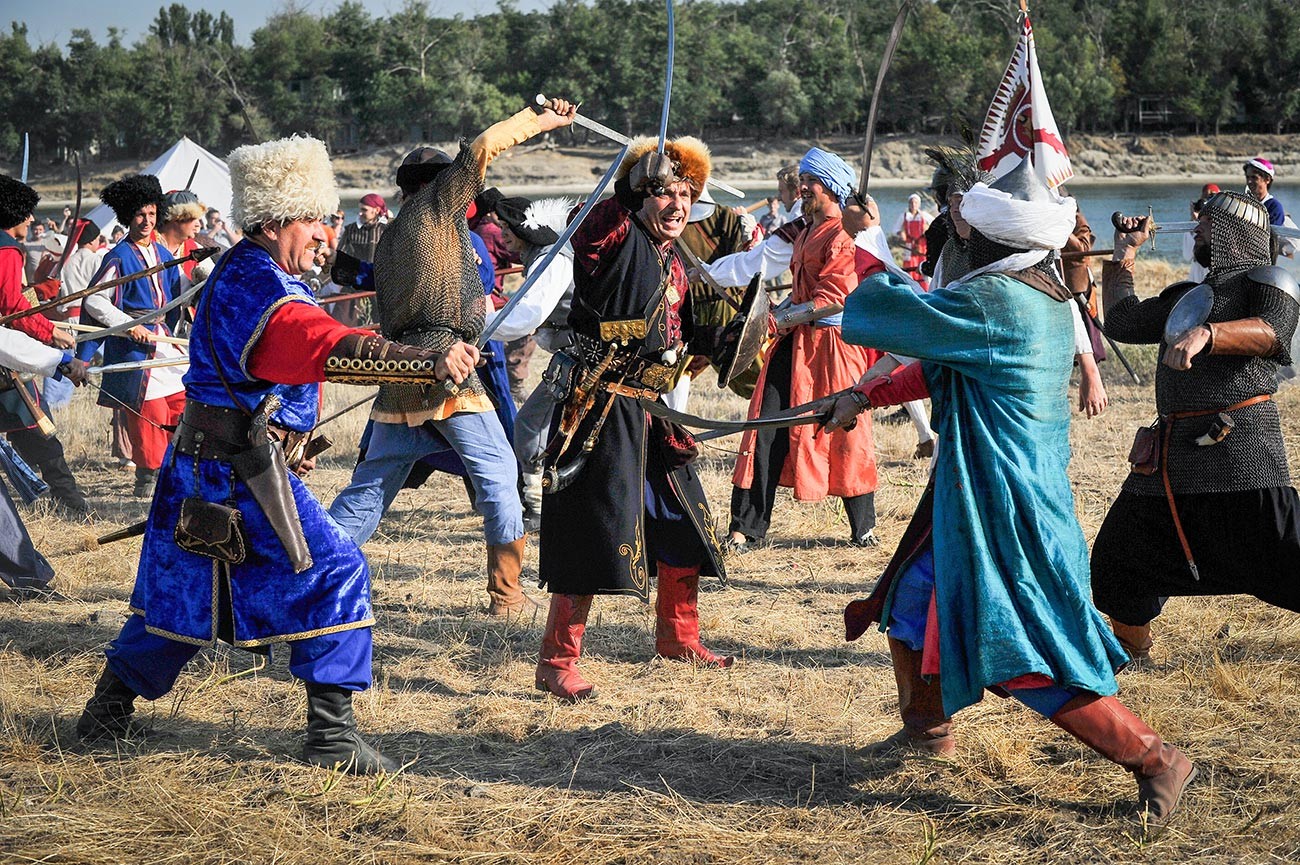
Reenactment of a 17th-century Cossack battle
Sergey Pivovarov/SputnikIn the 17th and 18th centuries, the areas the Cossacks traditionally inhabited became parts of Russia. In 1667-1671, the politics of the Moscow Tsardom caused the Don Cossacks to ignite an uprising known as Stepan Razin Peasant War. The leader, Stepan Razin, was eventually surrendered to the tsar’s officials by his fellow Cossacks, because they wanted to keep their autonomy. However, in the beginning of the 18th century, the Don Cossacks were subdued by Peter the Great and their lands became part of the Empire.
During Catherine the Great’s reign, roughly the same thing happened – as the Russian Empire started to conquer the lands of the Malorossiya (modern day Ukraine and Belarus), the Rebellion of Emelyan Pugachev took place in 1773-1775. Pugachev, also a Cossack, led his men and peasants to Central Russia, only to be crushed by the Imperial Russian Army. After that, the Don Cossacks were firmly obliged to serve the state. Cossacks became a denomination among the Russian people, with certain privileges and responsibilities.
Who were the Zaporozhian Cossacks?
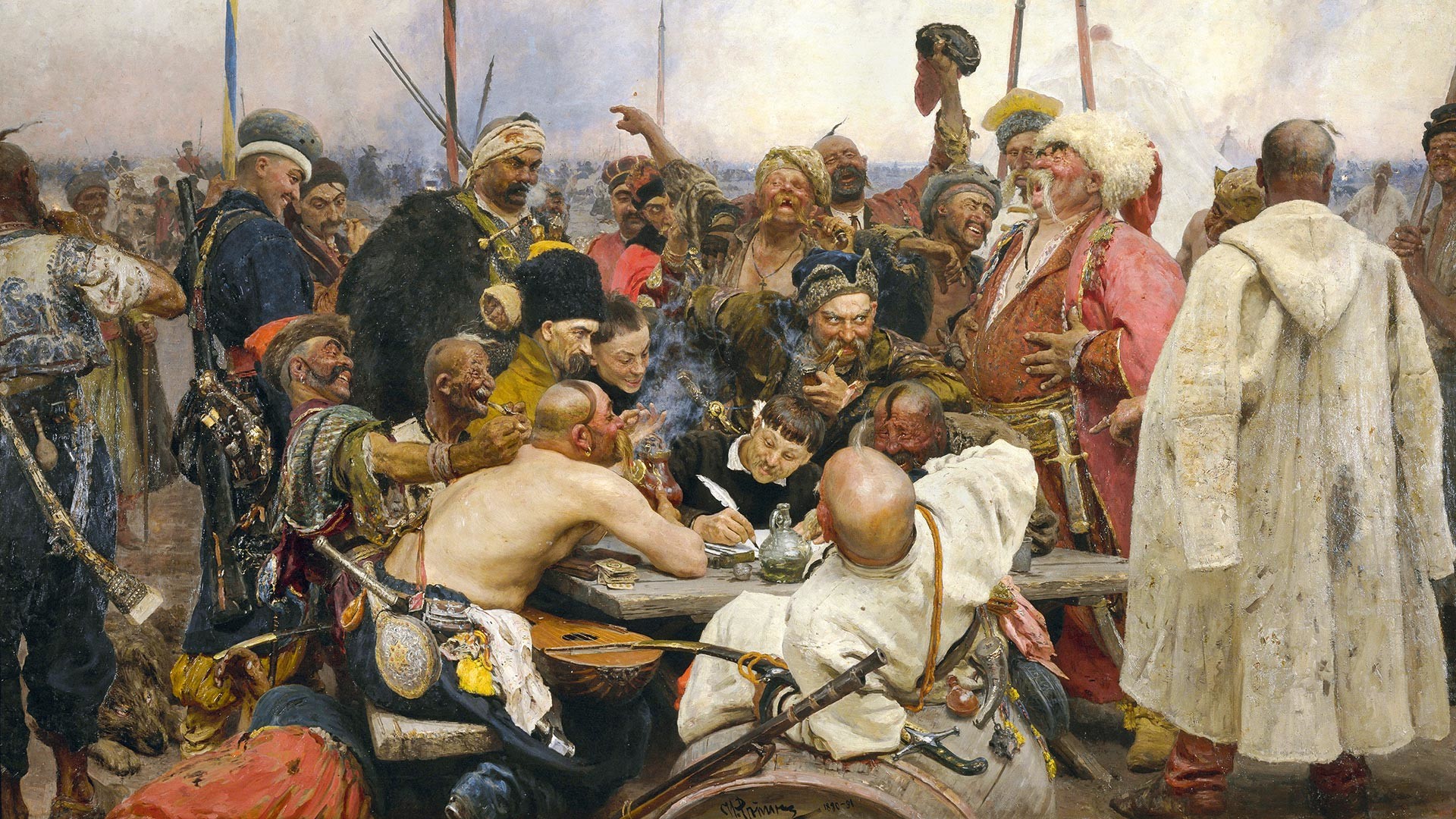
"Reply of the Zaporozhian Cossacks to Sultan Mehmed IV of the Ottoman Empire," 1880-1891 by Ilya Repin (1844-1930)
Ilya RepinIn the middle of the 17th century, the Russian state was joined by another major Cossack Host - the Zaporozhian. Settled in the valley of Dnieper river on the territories of central Ukraine, Zaporozhians were politically dependent on the Polish-Lithuanian state, defending its southern and eastern borders against Crimean Tatars, Ottomans, and even Moscow Tsars. However, since their relations with Poles left much to be desired, uprisings and liberation wars permanently occurred. During one of them led by Bohdan Khmelnytsky, the Zaporozhian Cossacks asked Russians for help and moved under the protection and rule of Moscow – the event considered in Russia and the USSR as "reunification of Ukraine and Russia".
The Zaporozhian Host's existence in the Russian state lasted just over a century. Because (due to the Russo-Ottoman wars) the Empire's borders were expanded southwards, the Zaporozhian Cossacks' territories were left far in the Russian rear, abandoning, in fact, the Cossacks' main role as the defenders of national borders. When in 1775, the Russian Empress Catherine II disbanded the Zaporozhian Host, some Cossacks chose to serve the Ottoman Sultan, the others settled down on the territories of the modern Kuban region of Russia. They became the forefathers of those whom we know today as the Kuban Cossacks.
Why were Russian explorers called Cossacks?
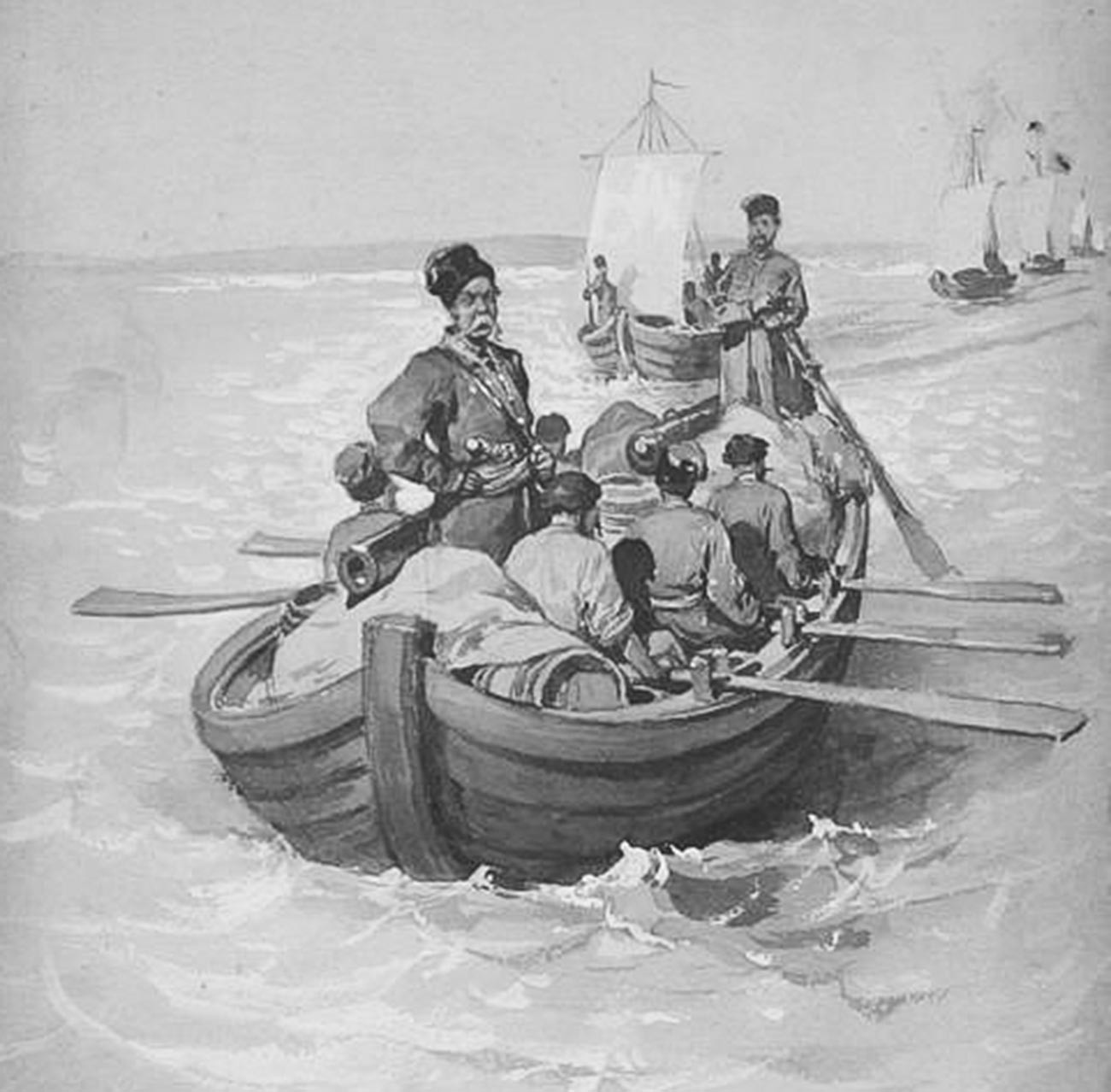
The Semyon Dezhnev expedition
Klavdy LebedevYermak, who subdued the Siberian Khanate, Semyon Dezhnev, who discovered what is now the Bering Strait, and many other Russian explorers of the 17th-18th centuries were called Cossacks because they served on the outskirts of the Russian land, protected its borders and expanded its influence outwards. Semyon Dezhnev even served formally as a Cossack in the Siberian town of Tobolsk. However, these Siberian Cossacks were not like the Cossacks of the Don region – they were not united into hosts (armies), but were more like border guards.
What were the faiths and nationalities of Cossacks?
The Cossacks didn’t belong to any particular nationality. Most of the Cossacks of Don had mixed ancestry – partly Central Russian, partly Southerners, with strong Tatar as well as Polish influences, so we aren’t able to define them ethnically.
Most of the Cossacks were Russian Orthodox and Russian Old Believers. Their Christian faith defined them more than their nationality or their place of living; also, the Cossack principles and way of life united very different people that identified as Cossacks.
What was special about the Cossack way of life?
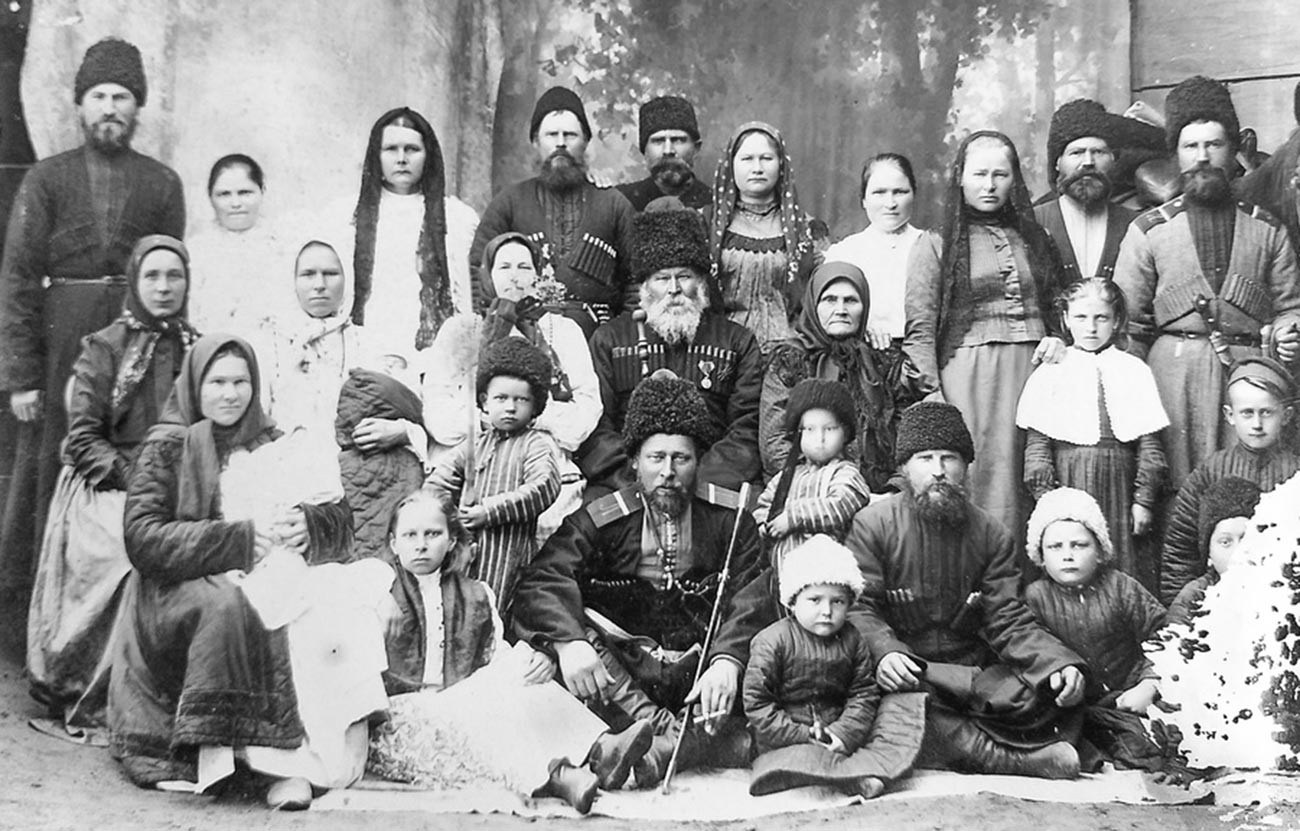
A Cossack family
russiainphoto.ru/What strikes us immediately about the Cossacks are their hairstyles, their moustaches and their colourful clothing, that bears a strong resemblance to the clothing of the Northern Caucasus people – very much because it’s the clothing of professional warring riders living in warm climates.
A Cossack boy was taught to ride, to use a sword, and to fire a gun from the age of 10. Cossack upbringing was harsh. Kids worked in the fields side by side with their mothers and fathers, and even their games were military. Singing and dancing was also an important part of the upbringing of boys and girls, because a Cossack person is always a jolly and fearless one.
Since ancient times, Cossacks were always ready to withstand a sudden attack by nomadic tribes, that’s why the Russian government tolerated their freedom for so long – until the central authorities became able to use the army to effectively protect the Southern borders, they needed Cossacks as protectors of these lands.
How many Cossacks were there?
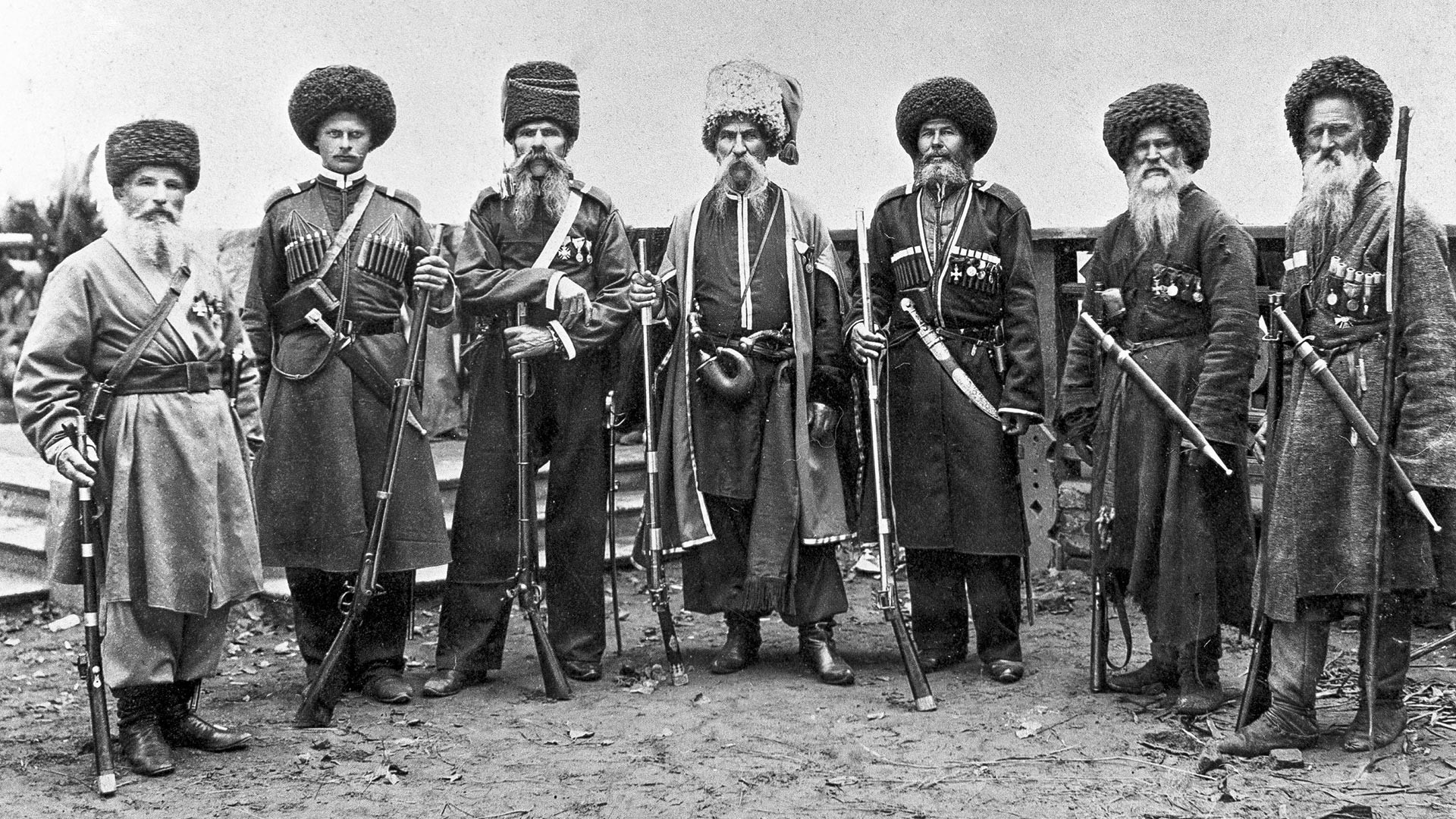
It’s really hard to tell – as the Cossacks didn’t pay taxes and didn’t take part in the census. We only have approximate numbers for the end of the 19th – beginning of the 20th centuries.
The 1897 census, the first one that showed the numbers of the Cossacks, estimated that there were about 3 million Cossacks (1,448,382 men and 1,480,460 women). However, their real numbers were much bigger than that, estimated around five million in the whole Empire.
Where were the Cossacks in the Soviet times?
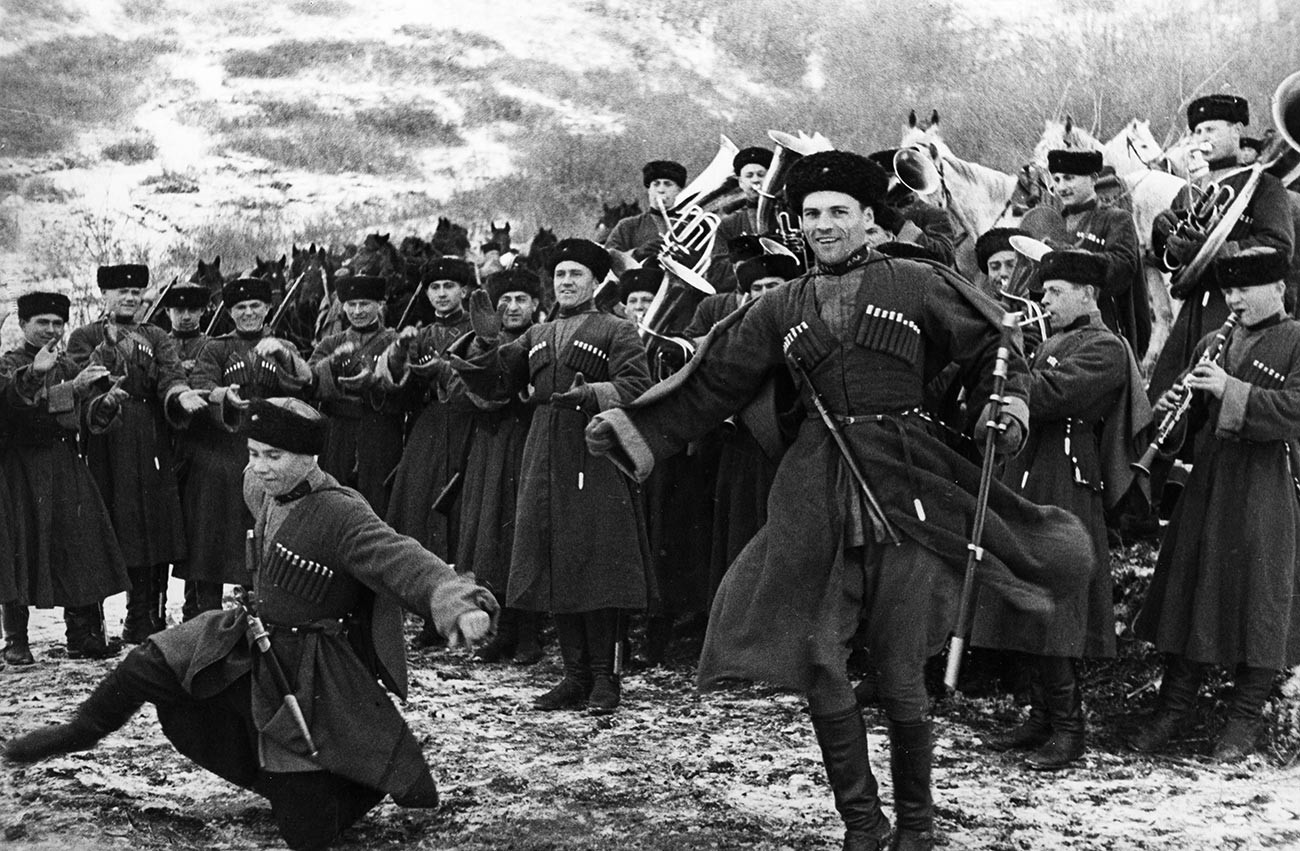
Soviet red army Cossacks giving a traditional dance performance
Getty ImagesDuring Soviet times, many Cossacks suffered repressions, because most of them fiercely opposed the Bolsheviks. The Bolshevik government adopted a policy of de-Cossackification (расказачивание). In 1918-1924, great numbers of Cossacks were executed and even greater numbers forcibly moved. The area of the Don Cossacks host was inhabited in 1917 by about 4.5 million people, half of them identified as Cossacks; by 1921, there were only about 2.2 million people left in this area.
However, there were Cossack military formations in the Soviet army, although they could not be compared in numbers to the Russian Empire’s Cossack hosts. The Soviet Cossacks in WWII were not very effective – cavalry are ineffective against tanks and airplanes.
Where are the Cossacks now?

Contemporary Russian Cossacks
Getty ImagesCurrently, people who identify themselves as Cossacks or say that they are of Cossack origin, are living on the territories of Russia, Kazakhstan, Ukraine, and in different parts of the world (many Cossacks emigrated from Russia after the Bolshevik revolution of 1917).
In 1989, the Supreme Soviet of the Soviet Union officially acknowledged the unjust repressions carried out against Cossacks and confirmed their right to be formally rehabilitated politically. In 1994, the government of the Russian Federation declared that “The revival of the traditional Russian state service of the Cossacks is one of the elements of the formation of a new Russian state.”
Currently, there is a Russian paramilitary formation called the Registered Cossacks of the Russian Federation. It unites a hierarchy of contemporary Russian Cossack societies in various parts of the country. There is also a Council of Cossack affairs under the President of the Russian Federation. There are about 140,000 Cossacks (members of the Cossack societies) now in Russia, and 11 major Cossack societies registered, but the number of Cossack descendants is much bigger.
If using any of Russia Beyond's content, partly or in full, always provide an active hyperlink to the original material.
Subscribe
to our newsletter!
Get the week's best stories straight to your inbox